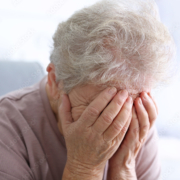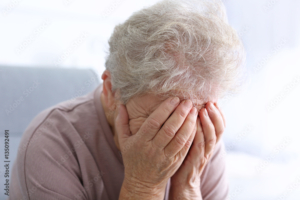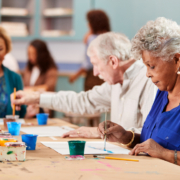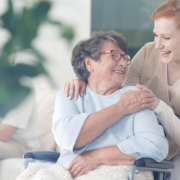Causes of Bipolar Depression
Bipolar disorder runs in families, with genetics believed to play a significant role. A person with this inherited vulnerability may develop bipolar disorder in response to environmental triggers such as a traumatic experience or drug abuse. Serotonin, dopamine, and norepinephrine are three neurotransmitters—or chemical messengers in the brain—that help regulate our moods. It is believed that imbalances in these biochemicals are responsible for the mood swings of bipolar disorder. Brain imaging scans reveal significant differences between the metabolism of a normal brain and a bipolar brain. During normal mood, brain activity and blood flow across the two sides of the brain are basically equal. Hormonal imbalances have been found in many people with bipolar disorder. In particular, high levels of the stress hormone cortisol and abnormal levels of thyroid hormone are believed to contribute to manic and depressive mood episodes.
Severe stress or emotional trauma can trigger either a depressive episode or a manic episode in an individual predisposed to bipolar disorder. Stress can also prolong a bipolar mood episode. Major life events such as getting married, going away to college, or starting a new job can trigger a mood episode. Certain medications, most notably antidepressant drugs, can trigger a manic episode. If antidepressants are prescribed during the depressive phase of bipolar disorder, they must be taken with a mood stabilizer in order to avoid this complication. Sleep deprivation—even as little as skipping a few hours of sleep—can trigger an episode of mania. Episodes of mania and depression often follow a seasonal pattern. Manic episodes are more common during the summer, and depressive episodes are more common during the fall, winter, and spring. Disturbances in circadian rhythms have been implicated in bipolar disorder. Some researchers believe that the biological clock that regulates our sleep-wake cycle is abnormally fast in people with bipolar disorder.
Symptoms of Bipolar Disorder
Bipolar, also known as manic depression, is characterized by cycling mood changes, with episodes of depression alternating with episodes of mania.
Typically, the switch from one mood extreme to the other is gradual, with each manic or depressive episode lasting for at least several weeks. When depressed, a person with bipolar disorder exhibits the usual symptoms of major depression. People with bipolar disorder are at risk of death – either by dangerous behavior in the manic state or by suicide in the depressive state. About 5.7 million American adults, or about 2.6 percent of the population age 18 and older in any given year,1 have bipolar disorder. Bipolar disorder typically develops in late adolescence or early adulthood. However, some people have their first symptoms during childhood, and some develop them late in life. Bipolar disorder sends you on an emotional rollercoaster, and the results can be devastating. Bipolar Disease has affected many well-known musicians, writers, and artists the illness and the effects the disease has on the lives of its sufferers have been trivialized. The reason is that there are so many creatively talented people who live with Bipolar Disease.
the switch from one mood extreme to the other is gradual, with each manic or depressive episode lasting for at least several weeks. When depressed, a person with bipolar disorder exhibits the usual symptoms of major depression. People with bipolar disorder are at risk of death – either by dangerous behavior in the manic state or by suicide in the depressive state. About 5.7 million American adults, or about 2.6 percent of the population age 18 and older in any given year,1 have bipolar disorder. Bipolar disorder typically develops in late adolescence or early adulthood. However, some people have their first symptoms during childhood, and some develop them late in life. Bipolar disorder sends you on an emotional rollercoaster, and the results can be devastating. Bipolar Disease has affected many well-known musicians, writers, and artists the illness and the effects the disease has on the lives of its sufferers have been trivialized. The reason is that there are so many creatively talented people who live with Bipolar Disease.
The extreme mood states of the disease disrupt normal activities, causing problems at home, work, and school. In the manic phase, you may be hyperactive and irresponsible. Bipolar disorder involves periods of elevated mood or mania, alternating with periods of depression. A person with bipolar disorder typically cycles between these two extremes, often with periods of normal mood in between. The pattern of symptoms differs from person to person. Some people are more prone to either mania or depression, while others experience equal numbers of manic and depressive episodes. The frequency and duration of mood episodes also vary widely. Bipolar disorder causes dramatic mood swings—from overly “high” and/or irritable to sad and hopeless, and then back again, often with periods of normal mood in between. Severe changes in energy and behavior go along with these changes in mood. Psychiatrists list four types of bipolar disorder. The four types differ largely on three factors. One factor is whether mania (the highs) or depression (the lows) is more common in the patient. The second factor is how serious each condition is. The third factor is how fast the patient alternates between stages.
Treatment of Bipolar Depression
People with bipolar disorder typically receive medication and psychotherapy. Mood stabilizers can help control mood swings, prevent recurrences of mood swings, and reduce the risk of suicide. They are usually taken for a long time, commonly for many years. Examples include lithium and certain anticonvulsant drugs such as lithium and Valproate. These chemicals are among the oldest and most frequently prescribed of all drugs for the treatment of bipolar disorder. Carbamazepine is an anticonvulsant drug used to prevent convulsions (spasms). It is often prescribed to patients for whom lithium treatment is ineffective. Valproate is primarily for the treatment of patients with rapid cycling bipolar disorder. Patients often do not respond to treatment with these medications. One group of drugs used to treat depression is called selective serotonin re-uptake inhibitors (SSRIs). These drugs increase the amount of serotonin in the brain. Serotonin is a major neurotransmitter which is a hormone that appears to affect mood, emotions, appetite, and digestion. As the precursor for melatonin, it helps regulate sleep-wake cycles and the body clock. Some side effects of SSRIs include anxiety, diarrhea, drowsiness, headache, sweating, nausea, poor sexual functioning, and insomnia (see insomnia entry).
In extreme cases, Bipolar disorder is sometimes treated with electroconvulsive shock therapy or ECT. ECT is a procedure in which intense electrical shocks are administered through electrodes attached to the patient’s head. The patient is first given anesthesia and a muscle relaxant.

 Introduction
Introduction







